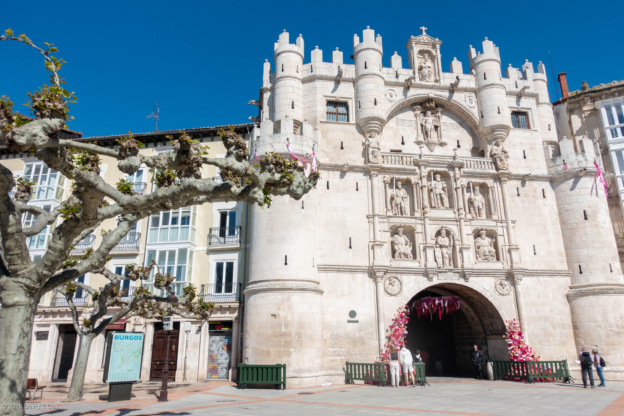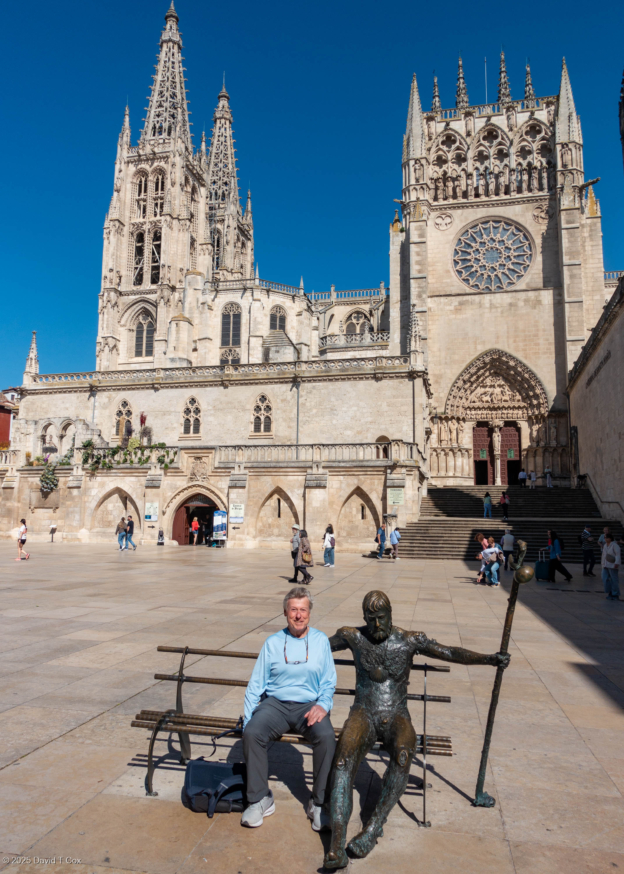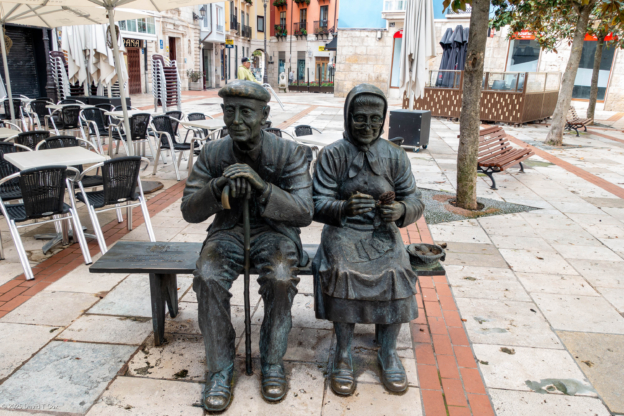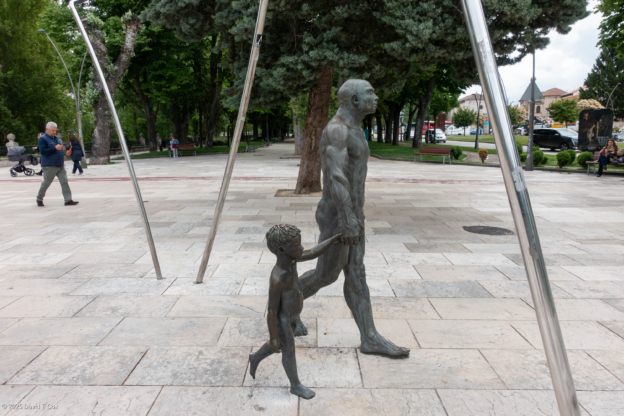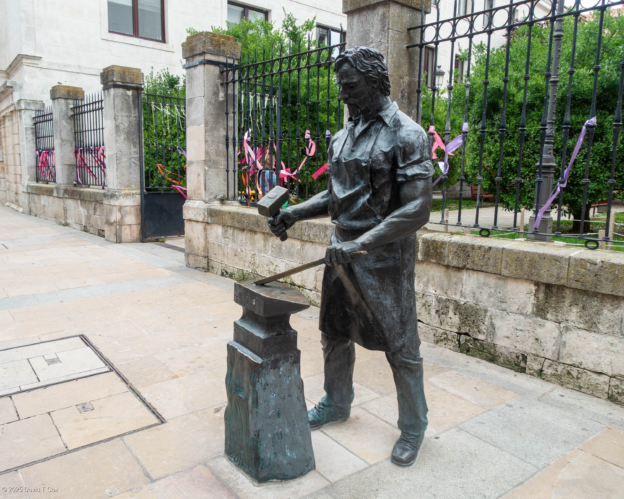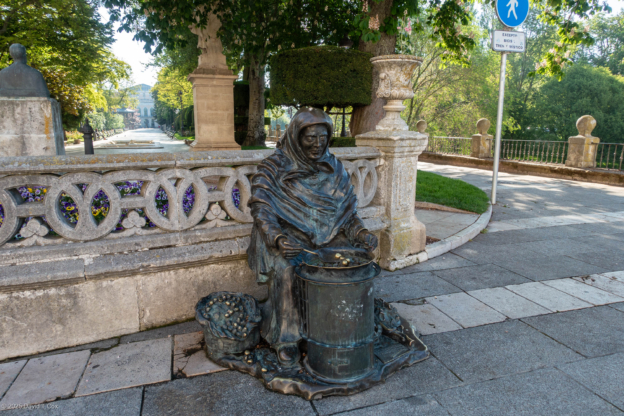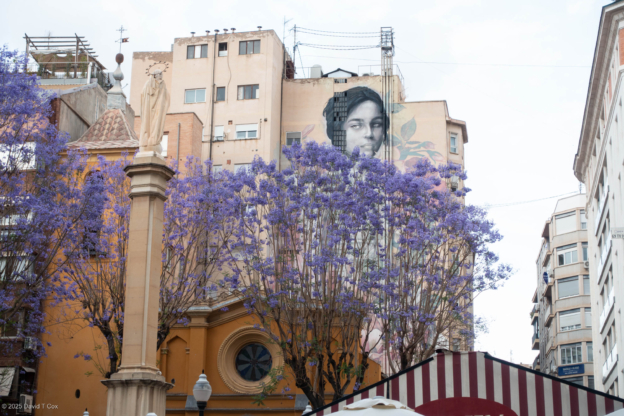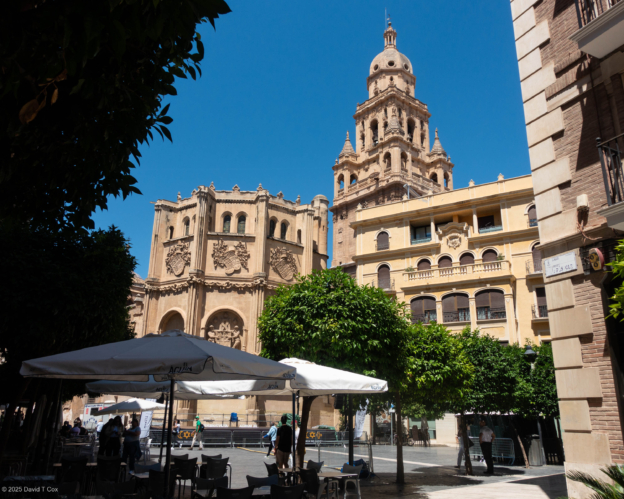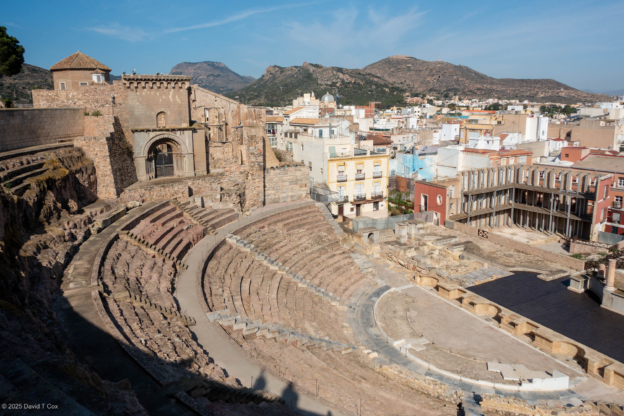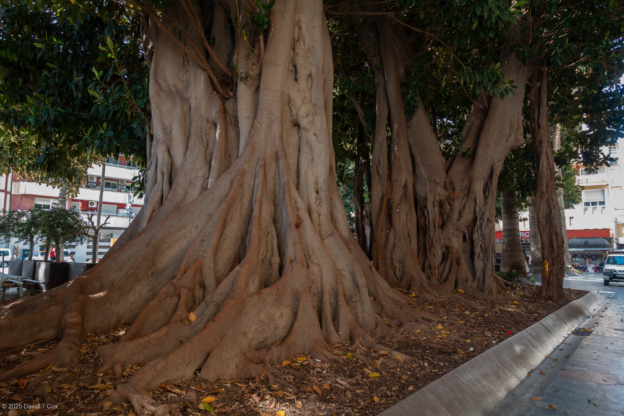All Photos Are Below the Travelogue Text
Click on Any Photo To Open Slide Show
To print the travelogue, right click anywhere on the page. Choose "Print" from your browser dialog box. You can choose Save to PDF in the browser print window.
Share your thoughts.
Email Dave - coxdavid55@hotmail.com
From Pamplona, I backtracked by train to Burgos on May 16. The travel was through green mountains and the curving rail track did not permit high speeds. Burgos, which I previously have reported on, has one of the most impressive cathedrals in Europe. It is massive with multiple towers, and is 100% Gothic, claimed to be a style called French Gothic, and is considered one of the greatest cathedrals in Spain and, indeed, in Europe. That, and the numerous bronze statues in the old quarter of town, make it one of the must-see cities in Spain. I have included a number of photos of the bronzes below. I particularly enjoyed the old couple seated on a plaza bench, and the young “peregrino” (pilgrim) on his Camino de Santiago, seated below the cathedral (joined briefly by yours truly).
I visited again the Museum of Human Evolution, one of the finest museums I have seen, which has 5 floors of exhibits and explanations. It is located in Burgos because the nearby Atapuerco Mountains contain limestone caves with vast amounts of hominid remains beginning from over 1 million years ago, easily the oldest in Europe. Most of the fossils are deemed to belong to the hominid tree which leads ultimately to Neanderthal (called “Heidelbergensis” going back 400,000-600,000 years, with the still older fossils called “Antecessor”), although there are some who argue that Homo Sapiens also shares genes with these remains. The field remains full of differing positions on the ancestry of modern homo sapiens from the various fossil records, both in Europe and Africa. It seems to be agreed that the hominid forbearer’s ancestral line split from that of chimpanzees about 6 million years ago, with all subsequent evolution, leading to hominids, up to 1 million years ago, occurring in Africa. Most believe the evolution in Europe over the succeeding million years led to Neanderthal, our closest relative, but not our direct ancestor; Neanderthal probably was a dead-end concluding about 40,000 years ago; meanwhile Sapien evolved during those million years in Africa, not crossing to Europe until under a hundred thousand years ago.
From Burgos I traveled back to Madrid for a night, and then on to Murcia, capital of Murcia Region which is on the southeastern coast between Andalucia and Valencia. Not as heavily touristed as most of Spain, I can sense why – lots of taverns and cafes, but none serving “menu del dia” (almost everywhere in Spain the “menu del dia” is the best meal deal of the day, a 3-course meal), and Murcia has none of the really “wow” museums or churches of other sites. Still, I was glad finally to have seen the town.
From there I traveled the short distance south to the coast and the ancient city of Cartagena. It has a long history as perhaps the major seaport of the Spanish Navy, and 4 different museums display all manner of military history. The Artillery Museum has the largest collection of artillery in Europe and probably the world, in all sizes, hand drawn to motorized. I had not realized that the city was founded by the Phoenicians and originally was named New Carthage. The town has a very nice Underwater Archaeology Museum, with information on and reconstruction of one of the two almost complete 7th Century BC Phoenician boat wrecks found just a little offshore.
From Cartagena I traveled for a second visit to Alicante on the coast, where I had spent a couple of days almost 20 years ago. Although not having much in the form of great edifices or museums, it does sport lots and lots of good restaurants and sidewalk beer taverns. And, the beach and promenade are spectacular, as is the Santa Barbara Fortress on a high hill overlooking the town and port. On my last day I climbed the 450-foot hill to get the views from the Fortress. I have included 2 panorama pics below from Alicante, one from the beach looking to the Fortress, and the other from the Fortress looking to the beach. The tourists are largely European, with a smattering of many languages, and lots of shorts and loose tops displaying red sunburned skin. It is here I will mention that the drink of choice in the Spanish sidewalk cafes has changed over the almost 25 years I have traveled here; decades ago the majority drank wine, which is less common now, though still cheaper. Beer, surprisingly, is now the more popular drink, even among elderly ladies seated in the cafes in the early or late afternoons. I have revisited some of my older travelogs, where I bemoaned the rather tasteless blond beers on tap in Spain. Now there is a large variety, and even many of the local brands are much tastier than decades ago.
My trip is winding down, with only two weeks left. I realize this remainder would be considered quite a lot of vacation time for many people, but for me it means nearing the end of my travels. I will go from Alicante back to central Spain for the last couple of weeks in Segovia, Toledo and Madrid. Later. Dave
- Catedral World Heritage Site, French Gothic, Burgos, Spain
- Dave seated beside Bronze Peregrino de Camino de Santiago seated before Catedral, Burgos, Spain
- Arco de Santa Maria, Burgos, Spain
- Bronze man leaning against pillar reading newspaper, Burgos, Spain
- A Nuestros Mayores, Bronze Elderly Couple on Bench, Burgos, Spain
- Bronze man walking child towards Human Evolution Museum (?Neanderthal leading Sapien ?), Burgos, Spain
- Bronze Blacksmith, Burgos, Spain
- Bronze Lady La Castanera, roasting chestnuts, Burgos, Spain
- Jacaranda Trees and building painting, Plaza Flores, Murcia, Spain
- Catedral, Murcia, Spain
- Seaport Cartagena, Spain
- bronze Seaman carrying duffle, Cartagena, Spain
- bronze seaman seated on bench, Cartagena, Spain
- Roman Theater, Cartgena, Spain
- great ficus trees in San Francisco Park, Cartagena, Spain
- bronze giant in memory of victims of Terrorism, Cartagena Port, Spain
- crowded Sunday beach with Castillo Santa Barbara Fort in background, pano, Alicante, Spain
- Panorama view from Castillo Santa Barbara, Alicante, Spain
To print the travelogue, right click anywhere on the page. Choose "Print" from your browser dialog box. You can choose Save to PDF in the browser print window.
Share your thoughts.
Email Dave - coxdavid55@hotmail.com
